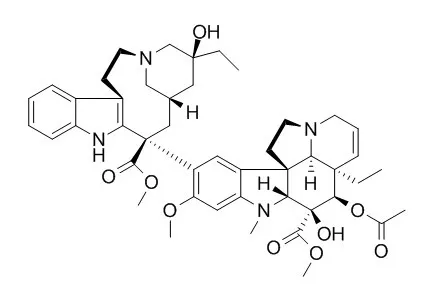Despite the availability of melanoma treatment at the primary site, the recurrence of local melanoma can metastasize to any distant organ. Currently, the available therapies for the treatment of metastatic melanoma are of limited benefit. Thus, the functional analysis of conventional therapies may help to improve their efficiency in the treatment of metastatic melanoma.
METHODS AND RESULTS:
In the present study, the exposure of melanoma cells to Vinblastine was found to trigger apoptosis as evidenced by the loss of mitochondrial membrane potential, the release of both cytochrome c and apoptosis inducing factor, activation of caspase-9 and 3, and cleavage of Poly (ADP-ribose)-Polymerase. Also, Vinblastine enhances the phosphorylation of Ras homologous protein A, the accumulation of reactive oxygen species, the release of intracellular Ca(2+), as well as the activation of apoptosis signal-regulating kinase 1, c-jun-N-terminal kinase, p38, inhibitor of kappaBα (IκBα) kinase, and inositol requiring enzyme 1α. In addition, Vinblastine induces the DNA-binding activities of the transcription factor NF-κB, HSF1, AP-1, and ATF-2, together with the expression of HSP70 and Bax proteins. Moreover, inhibitory experiments addressed a central role for Rho A in the regulation of Vinblastine-induced apoptosis of melanoma cells via mitochondrial and non-mitochondrial-dependent mechanisms.
CONCLUSIONS:
In conclusion, the present study addresses for the first time a central role for Rho A in the modulation of Vinblastine-induced apoptosis of melanoma cells and thereby provides an insight into the molecular action of Vinblastine in melanoma treatment. |






 Cell. 2018 Jan 11;172(1-2):249-261.e12. doi: 10.1016/j.cell.2017.12.019.IF=36.216(2019)
Cell. 2018 Jan 11;172(1-2):249-261.e12. doi: 10.1016/j.cell.2017.12.019.IF=36.216(2019) Cell Metab. 2020 Mar 3;31(3):534-548.e5. doi: 10.1016/j.cmet.2020.01.002.IF=22.415(2019)
Cell Metab. 2020 Mar 3;31(3):534-548.e5. doi: 10.1016/j.cmet.2020.01.002.IF=22.415(2019) Mol Cell. 2017 Nov 16;68(4):673-685.e6. doi: 10.1016/j.molcel.2017.10.022.IF=14.548(2019)
Mol Cell. 2017 Nov 16;68(4):673-685.e6. doi: 10.1016/j.molcel.2017.10.022.IF=14.548(2019)